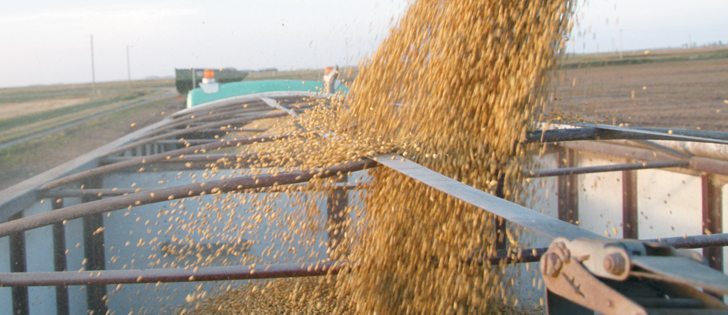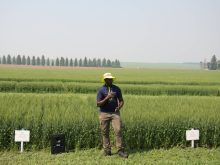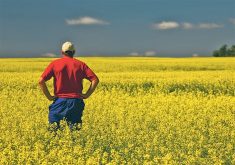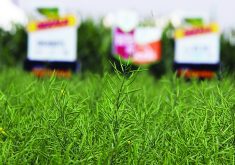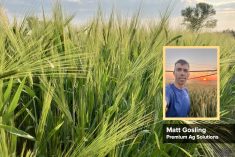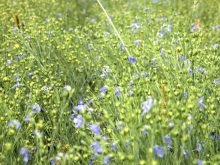U.S. grower trials show yield bump of about 10 percent following canola versus winter wheat
Canola competes with soybeans for acres in many parts of North Dakota, but a new study could turn the crops from adversaries to pals.
Researchers with North Dakota State University are evaluating anecdotal evidence that soybean yields increase when the crop is planted following canola.
Brian Jenks, who leads the university’s North Central Canola Research program, initiated the study last year. He said several growers in Minnesota and North Dakota had observed a benefit from growing canola before soybeans.
“They brought it to our attention and asked us if we could research it, to see if (the yield increase) was legitimate or just a fluke.”
Read Also

Canadian Food Inspection Agency slammed for handling of bovine tuberculosis case
The federal government leans heavily on producers to “take one for the team” and risk their livelihoods without any reassurance of support.
Ryan Pederson, who farms near Rolette, N.D., said pairing canola and soybeans contravenes conventional thinking.
“As an agronomic practice, at first breath it sounds like a really bad idea,” he said. “But guys have been doing it and (say) they get a yield bump on their soybeans (planted) on canola stubble versus wheat stubble.”
Jenks found four studies in the southeastern U.S. that looked at this rotation question. Two of them found no yield boost but the other two detected a yield benefit.
Andrew Moore, who grows winter canola near Resaca, Georgia, said on-farm and university data indicates that canola is a complementary crop to soybeans.
“What we’ve seen is … that soybeans do about 10 percent better following canola versus following winter wheat.”
Jenks said the research doesn’t explain how or why canola benefits soybeans.
“Those who conducted the studies didn’t put forward any scientific or physiological reason for the potential increase.”
Jenks seeded wheat, canola and soybeans last year and will officially begin the study this spring.
“This will be our first test. We don’t have any data yet,” he said.
North Dakota farmers typically choose between canola and soybeans. Canola is losing acres to soybeans in parts of the state, so a favorable study result could boost canola acres because farmers might choose to grow both crops.
Jenks has his doubts because it could amplify disease pressure.
“My first thought when I heard about this was: what about sclerotinia?”
Jenks said the first rotation of soybeans after canola might be fine, but diseases could flourish if the practice is continued.
Contact robert.arnason@producer.com


